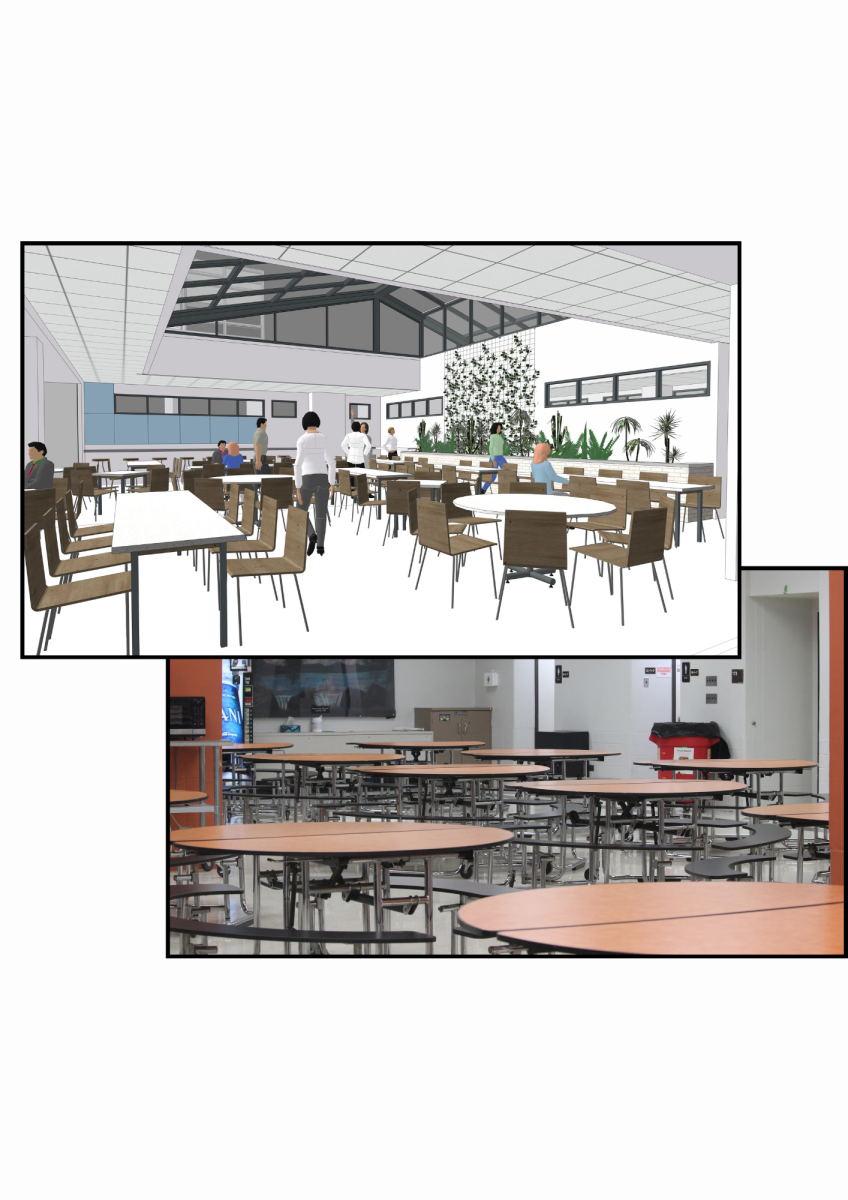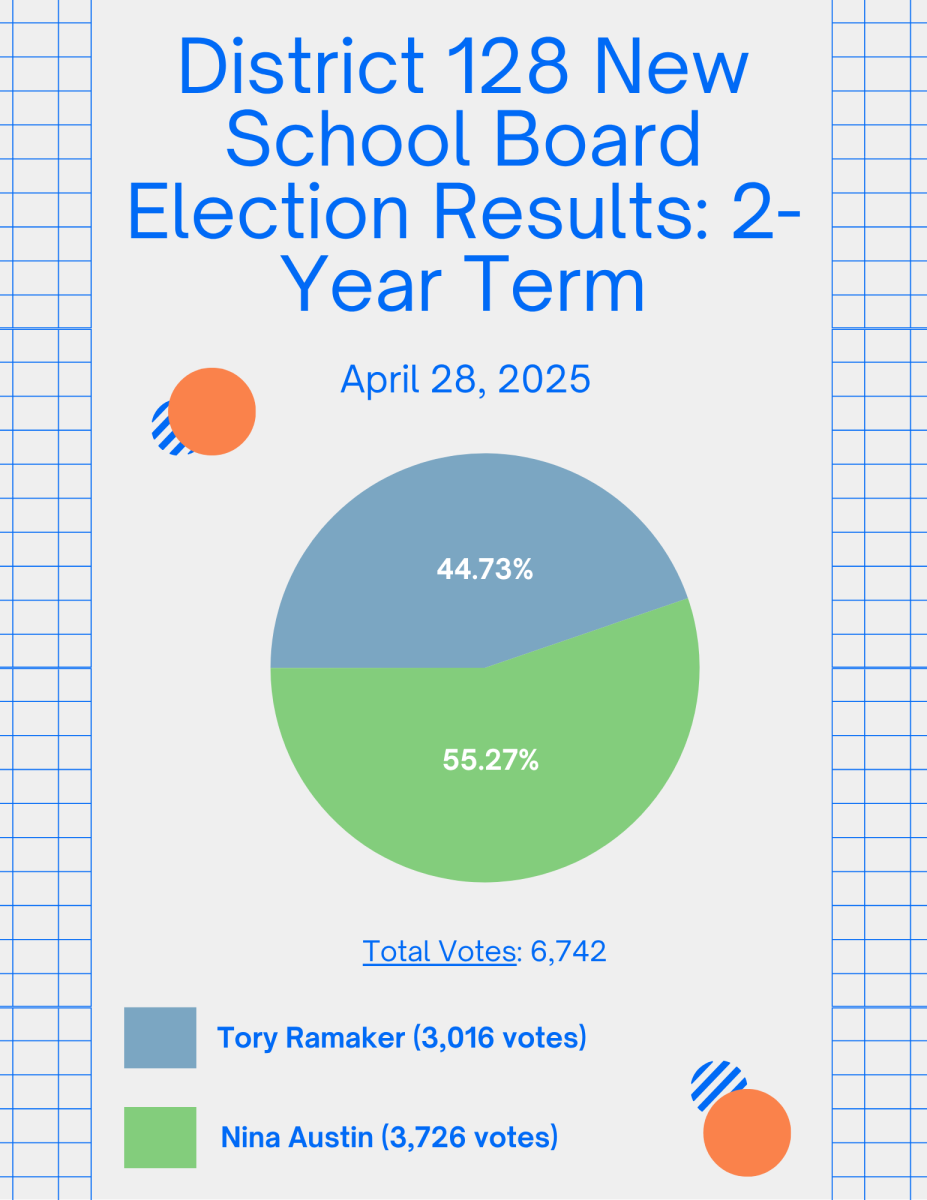The current cafeteria, built in 1953, will potentially undergo a major renovation that includes updating the servery, seating area, kitchen area, floors and ceilings. The total cost is estimated to range from $8 million to $13.6 million, according to The Daily Herald.
While the project has not yet been approved by the D128 Board of Education, the renovation team, including building representatives, construction managers, architects, district leaders and students, has been working with an architect and construction oversight company to continue their research and plans for the renovation. Once they present their plans to the board, the board will ultimately decide if they want to move forward with the project.
“They’ve indicated that it’s the project of highest priority in the district right now,” Assistant Principal Dr. Ray Albin said. “[But] it’s not just LHS, they have to balance projects all across the district, and projects like this cost a lot of money. [You have to make] sure that [it] fits within the constraints that the district has.” According to The Daily Herald, District 128 has $15.7 million set aside for about a dozen projects.
The construction of the new cafeteria will likely happen over the next two sum
mer breaks and during the 2024-25 school year, and is projected to be complete by spring of 2025.
“They would essentially make a new kitchen while our current kitchen is still up and running and then finish that out during the school year,” Dr. Albin said. “During the next summer, they would remake the servery area and the seating area.”
One of the changes proposed by the renovation team is closing off the courtyard and putting a roof and skylight over it. Other alterations would include the teacher’s lounge becoming the food cooking and prep area, and the food servery moving to where the food services are located now.
“The [checkout] stations are going to look different,” Dr. Albin said. “Modern servery is a larger open area with stations that people go to and then all funnel to checkout lanes, as opposed to being enclosed.”
One of the goals for the renovation is to allow for a greater seating capacity and more versatile assortment of seating.
“It’s definitely a need, 100%,” Building and Grounds Director Mr. Chris Stancil said. “Part of the problem, too, is there’s too many periods for lunch itself and there’s not enough room for all of the students to eat. So it needs to be expanded.” Lunch currently stretches across four periods, from 10:30 a.m. to 1:45 p.m., but with a larger cafeteria, more students could be served lunch and fewer lunch periods would be needed.
In addition to updating the kitchen, servery, courtyard and seating, the team is also updating the bathrooms. ECOS club has talked about adding a graywater system for the bathrooms, which entails running the toilets with collected rainwater instead of freshwater. This system will help reduce our environmental footprint and be more environmentally responsible.
“Because of the area that we live [in], we have access to a lot of freshwater from the lakes,” senior and ECOS club Co-President Atalhea Herman said. “Not everyone has that access. Some of the predictions out there are that a lot of people who live in Florida and especially to places that are suffering from extreme drought are going to start moving towards where we are because we have the water. So if we can reduce some of our freshwater use in the bathrooms, we can make sure there’s more leftover for the people who aren’t as privileged as we are to have.”
In addition to using graywater in the bathrooms, ECOS also proposed using reusable silverware and dishes as well as composting.
“If they go with composting, take a couple extra seconds and actually do the composting because it does make a difference,” Herman said.
While the renovation hasn’t officially started yet, it predicts a positive change for not only students and staff, but for the environment and community as a whole.
“Anytime we can get capital money tied into this building to touch areas of the building that haven’t been touched for some time is fantastic,” Mr. Stancil said. “You know, there’s only so much you can do to keep things up [to date] without doing complete renovations.”





![Mr. Abullh Ali, manager/assistant, helps open Queen Yemeni Coffee in downtown Libertyville at 606 North Milwaukee Ave. With the help of employees such as manager and LHS senior Yousef Taha, they are able to bring the Yemeni and Ethiopian culture to Libertyville by using their Queen spices, cinnamon and cardamom in their drinks such as Adani Chai, which is inspired by Sheda, the Queen of Yemen and Ethiopia. “The history of our coffee [is] a long history and we believe that Yemen and Ethiopia started the coffee and we are bringing something unique to the community,” Mr. Ali said.](https://www.lhsdoi.com/wp-content/uploads/2025/04/Photo-1-1200x800.jpg)




